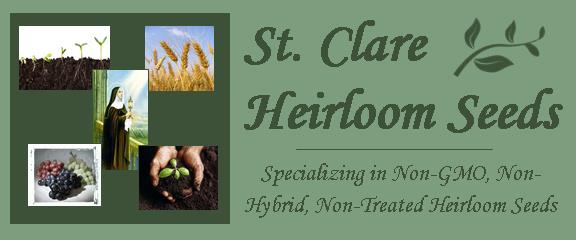Key Plant Food Elements That Your
Open Pollinated / Heirloom Vegetable Garden Needs
The performance of your plants is directly related to the degree of the fertility of your soil and the nutrients each plant receives. Like humans, plants require certain elements to grow well and to remain healthy and productive.
The plant food elements table below provides more information on each nutrient, its function in the plant, deficiency symptoms, excess symptoms, and sources to cure the deficiency.
Key Plant Food Elements
| Element | Symbol | Function in Plant | Deficiency Symptoms | Excess Symptoms | Sources |
| Nitrogen | N | Gives dark green color to plant. Increases growth of leaf and stem, Influences crispness and quality of leaf crops. Stimulates rapid early growth. | Light green to yellow leaves. Stunted growth. | Dark green. Excessive growth. Retarded maturity. Loss of buds or fruit. | Urea Ammonia Nilrates |
| Phosphorus | P | Stimulates early formation and growth of roots. Gives plants a rapid and vigorous start. Is important in formation of seed. Gives hardiness to fall-seeded grasses and grains. | Red or purple leaves. Cell division retardation | Possible tie up of other essential elements. | Superphosphate Rock Phosphate |
| Potash | K | Increases vigor of plants and resistance to disease. Stimulates production of strong, stiff stalks. Promotes production of sugar, starches, oils. Increases plumpness of grains and seed. Improves quality of crop yield. | Reduced vigor. Susceptibility to diseases. Thin skin and small fruit | Coarse, poor colored fruit. Reduced absorption of Mg and Ca. | Muriate or Sulphate of Potash |
Secondary Plant Food Elements | |||||
| Calcium | Ca | Part of cell walls. Part of enzymes. | Stops growing point of plants. | Reduces the intake of K and Mg. | Lime Basic Slag Gypsum |
| Magnesium | Mg | Aids photsvnthesis. Key element in chlorophyl. | Loss of yield. Chlorosis of old leaves. | Reduced absorption of Ca and K. | Magnesium Sulphate (Epsom Salts) Dolomite is 1/3 Mg. |
| Sulfer | S | Helps to build proteins. | Looks like nitrogen deficiency. | Sulfur burn from too low pH. | Sulfur Superphosphate |
Minor Plant Food Elements | |||||
| Boron | B | Affects absorption of other elements. Affects germination of pollen tube. | Small leaves Heart rot and corkiness. Multiple buds. | Leaves turn yellowish red. | Borax |
| Copper | Cu | Enzyme activator. | Multiple budding. Gum pockets. | Prevents the uptake of iron. Causes stunting of roots. | Copper Sulphate Neutral Copper |
| Iron | Fe | A catalyst. In the enzyme system. Hemoglobin in legumes. | Yellowing of leaves, the veins remaining green. | None known. | Iron Sulphate (Copperas) Chelated Iron |
| Manganese | Mn | In enzyme system. | Mottled chlorosis of the leaves, Stunted growth. | Small dead areas in the leaves with yellow borders around them. | Manganese Sulphate (Tecmangam) |
| Molybdenum | Mo | Helps in the utilization of N. | Symptoms in plants vary greatly. | Poisonous to livestock. | Sodium Molybdate |
| Zinc | Zn | Aids in cell division. In enzymes and auxins. | Small, thin, yellow leaves. Low yields. | None known. | Zinc Sulphate |
Elements from air and water | |||||
| Carbon | C | Keystone of all organic substances. | None known. | None known. | Air (Carbon Dioxide) |
| Oxygen | O | Respiration. | White areas at leaf veins. High nitrates. | None known. | Air and Water |
| Hydrogen | H | Necessary in all plant functions. | Wilting. | Drowning. | Water |

